German Chocolate Cake Origin: A Tale as Rich as Its Frosting
Hello, sweet friends. I’m Molly Hart, coming to you from my cozy kitchen in Asheville, North Carolina, where the scent of warm cocoa and vanilla sweetens the air no matter the time of year. Join me on a stroll into the German chocolate cake origin, a tale as rich and layered as the cake itself.
My love of baking started long before I could tie my shoes. One of my earliest memories is standing on a stool beside my grandmother Edith, licking batter from a wooden spoon while she worked magic with her heavy-duty mixer. She was wearing a faded flowered apron, and somehow she always knew a cake was ready by the aroma filling the house. That’s when I fell in love with chocolate cake, not just because of the taste, but for the warmth and magic it brought into our house.
Life took me down many winding paths over the years. I raised three great kids, taught preschool, and even ran a small café downtown. But baking always pulled me back. My chocolate cake earned quite a reputation around town. Folks requested it for birthdays, family gatherings, and even once to help smooth things over between feuding neighbors. That cake mended more than hearts.
I never attended an elite culinary institute. I learned by doing, and I just kept at it. Today, I teach baking classes in my own kitchen and share recipes with chocolate lovers all across the country. So, today, let us get to the truth about German chocolate cake. It might just catch you off guard, and I assure you, bring a smile to your face.
Table of Contents
The Surprising History of German Chocolate Cake
How German Chocolate Cake Got Its Name
Despite what many believe, the German chocolate cake origin has nothing to do with Germany or European culinary traditions. The name itself is one of the most deliciously misleading titles in dessert history. This cake doesn’t trace back to Berlin or Bavaria. Instead, its story begins in the United States, with one man and a bar of sweet chocolate.
In 1852, Samuel German, an English-American baker and chocolate maker, developed a new style of dark baking chocolate for the Baker’s Chocolate Company. This version of chocolate was sweeter than the standard unsweetened variety and was marketed as “Baker’s German’s Sweet Chocolate.” It was a hit for home bakers looking to bring more flavor without the added bitterness. Over time, the apostrophe-s in “German’s” was dropped, and people started calling it simply German chocolate. So when a Texas homemaker submitted her now-famous chocolate layer cake recipe to the Dallas Morning News in 1957, using Baker’s German’s Sweet Chocolate in the batter, readers naturally called it “German Chocolate Cake“. The name stuck. But it wasn’t a nod to Germany, just a tip of the hat to Samuel German himself.
The Role of Samuel German and Baker’s Chocolate Brand
Samuel German wasn’t known for crafting desserts or writing about food. He worked for Baker’s Chocolate Company, a Massachusetts-based brand founded in the 18th century. German’s contribution was purely practical, yet it turned out to be revolutionary for American home baking. His chocolate gave people a smoother, sweeter alternative that didn’t require much adjustment in recipes.
By the 1950s, Baker’s Chocolate had grown into a household name. When the recipe for “German’s Chocolate Cake” made its debut, the company recognized a golden chance to promote it. They promoted the dessert nationwide and included the recipe on the packaging. Sales skyrocketed, and within a few years, this once-local Texas favorite became a beloved American dessert.
What makes this story sweeter is how unintentional the whole thing was. Samuel German never set out to become the namesake of a national dessert. Yet, more than a hundred years after his innovation, families across the country were serving a cake that bore his name without knowing a thing about the man behind it.
Check out how other chocolate cakes use different techniques in this chocolate cake with cream cheese frosting, which shows how varied and versatile chocolate desserts can be. Looking for a healthier twist? You might love the 3-ingredient protein chocolate cake that still satisfies those chocolate cravings.
By understanding the real story behind the German chocolate cake origin, we gain more than trivia. We connect with the rich, often unexpected paths that recipes take before they land on our plates. And that’s exactly what makes baking and eating such a joy.
Is German Chocolate Cake Really German? Debunking the Myth
Understanding the American Roots of the Cake
If you’ve ever assumed German chocolate cake came from Germany, you’re certainly not alone. The rich chocolate layers, coconut pecan filling, and decadent frosting might seem like the kind of dessert born in a European patisserie. But in truth, the origin of German chocolate cake is planted firmly on American soil. Specifically, it bloomed in the heart of Texas during the 1950s.
The famous recipe first appeared in the Dallas Morning News in 1957. A home baker named Mrs. George Clay submitted her recipe titled “German’s Chocolate Cake.” She used Baker’s German’s Sweet Chocolate in the batter, and the unique flavor paired perfectly with the gooey coconut-pecan frosting she created. That simple submission to a local newspaper unexpectedly sparked a national dessert trend.
As the cake gained popularity, the name evolved. The apostrophe was dropped from “German’s,” and before long, people everywhere were asking for German chocolate cake, assuming it was a European tradition. The reality, however, is that this now-famous dessert was created, named, and loved right here in the United States.
Why People Often Mistake It for a European Recipe
The confusion over the cake’s origins comes down to one word: German. When Americans see that word attached to a food, they naturally assume a cultural or national connection to Germany. But in this case, it’s just a coincidence. The name honors Samuel German, the man who invented the chocolate used in the cake, not the country.
Add to that the cake’s distinct flavor and elaborate presentation, and it becomes easy to see why so many people associate it with European pastry traditions. The layered structure, the thick frosting, and the specialty chocolate all give it a luxurious, old-world feel. Still, it was crafted in an American kitchen, by an American woman, using an American brand of chocolate.
Even though the name might mislead you, the cake itself stands proudly as a part of Southern baking culture. It’s rich, indulgent, and built for celebrations. You’re more likely to find it gracing the table at a Fourth of July potluck or a Sunday church gathering than at a café in Munich.
For another look at creative American chocolate desserts, you can discover great ideas like the sour cream chocolate cake, which offers its unique flavor and texture. Or if you’re craving a twist on tradition, don’t miss our German chocolate poke cake, a fun spin on the original that’s become wildly popular online.
In the end, the origin of German chocolate cake is not about geography but about heritage. It is a sweet slice of American creativity, with a bit of confusion sprinkled on top. And frankly, that makes it even more interesting.
Print
German Chocolate Cake Origin: The Sweet Truth Behind America’s Favorite Dessert
- Total Time: 1 hour 15 minutes
- Yield: 15 Serving
Description
The BEST homemade German Chocolate Cake with rich chocolate layers, coconut pecan filling, and silky chocolate frosting. A Southern-inspired classic with an all-American origin.
Ingredients
For the Chocolate Cake:
-
2 cups granulated sugar (400 g)
-
1¾ cups all-purpose flour (210 g)
-
¾ cup unsweetened cocoa powder (75 g)
-
1½ teaspoons baking powder (6 g)
-
1½ teaspoons baking soda (7.5 g)
-
1 teaspoon salt (5 g)
-
2 large eggs
-
1 cup buttermilk (240 ml)
-
½ cup vegetable or canola oil (120 ml)
-
2 teaspoons vanilla extract (10 ml)
-
1 cup boiling water (240 ml)
For the Coconut-Pecan Frosting:
-
½ cup light brown sugar (100 g)
-
½ cup granulated sugar (100 g)
-
½ cup butter (115 g)
-
3 large egg yolks
-
¾ cup evaporated milk (180 ml)
-
1 tablespoon vanilla extract (15 ml)
-
1 cup chopped pecans (120 g)
-
1 cup shredded sweetened coconut (80 g)
For the Chocolate Buttercream Frosting:
-
½ cup butter (115 g)
-
⅔ cup unsweetened cocoa powder (65 g)
-
3 cups powdered sugar (360 g)
-
⅓ cup evaporated milk (80 ml)
-
1 teaspoon vanilla extract (5 ml)
Instructions
- Prepare Cake Pans
Preheat oven to 375°F (190°C). Grease two round cake pans and line the bottoms with parchment paper rounds. - Make the Cake Batter
In a large bowl, whisk together sugar, flour, cocoa, baking powder, baking soda, and salt.
In a separate bowl, combine eggs, buttermilk, oil, and vanilla. Add wet ingredients to dry, mix until smooth, then stir in boiling water. Batter will be thin. - Bake the Cakes
Pour batter evenly into pans. Bake for 25–35 minutes (9″ pans bake faster) or until a toothpick comes out clean. Cool 5 minutes in the pan, then invert onto racks to cool completely. - Prepare the Coconut-Pecan Frosting
In a medium saucepan, combine both sugars, butter, egg yolks, and evaporated milk. Cook over medium heat, stirring constantly, until thickened.
Remove from heat, stir in vanilla, pecans, and coconut. Let cool completely.
Cooking the iconic frosting that defines German chocolate cake - Make the Chocolate Frosting
Melt butter, stir in cocoa. Alternate adding powdered sugar and milk, beating to desired consistency. Add extra milk or sugar as needed. Stir in vanilla.
The roots of German chocolate cake rise from a Dallas home kitchen
Notes
- High Altitude? Add 3 tablespoons extra flour.
- Make Ahead: Store frostings in the fridge 1–2 weeks. Bring to room temp before using.
- Freezing: Wrap cooled cake layers tightly and freeze for up to 3 months. Assembled cake or slices can be frozen individually. Thaw before serving.
- Prep Time: 30 minutes
- Cook Time: 45 minutes
- Category: Dessert
- Cuisine: American
Samuel German – The Man Behind the Misunderstanding
Who Was Samuel German? His Heritage and Contributions
When people hear the name German chocolate cake, many picture an old-world European recipe passed down through German grandmothers. In truth, the story begins with one man, Samuel German, and his work in an American chocolate company.
Samuel German was not German by nationality. He was an English-American who worked at the Baker’s Chocolate Company in Massachusetts, contributing his skills to the brand’s development. His most lasting contribution to the culinary world was the creation of a new type of chocolate in 1852, called German’s Sweet Chocolate. This baking chocolate was sweeter than the typical unsweetened variety available at the time, making it easier for home cooks to use without additional sugar or balancing techniques.
What made his invention significant was that it simplified recipes while enhancing flavor. This product was eventually marketed as “German’s Sweet Chocolate,” named after Samuel himself, and became widely available in American grocery stores. However, many years later, the apostrophe-s was dropped from the packaging, leaving the word German in its place. This change unintentionally led to decades of confusion. Samuel German never opened a bakery or published a cookbook. He was a practical innovator, a behind-the-scenes creator of a single, game-changing product. Yet his name has lived on in American kitchens because of the cake that eventually borrowed it.
How His Chocolate Led to a Naming Confusion
The misunderstanding began to spread quickly in the late 1950s after the now-iconic cake recipe was printed in the Dallas Morning News. The title, “German’s Chocolate Cake,” referred to the type of chocolate used in the batter, not the cake’s cultural origin. But over time, readers dropped the possessive form of the name. What had been “German’s Chocolate” became “German Chocolate,” and suddenly, the cake appeared to be a foreign dessert.
This shift seemed harmless at first. But within a few years, even cookbooks and food magazines had begun promoting the dessert as having European roots. The marketing around the cake only reinforced this idea, leading millions to believe they were baking something with deep German heritage.
What adds another layer to the story is how little is known about Samuel German beyond his chocolate contribution. Unlike some food pioneers, he left behind no published memoirs or detailed personal history. His name lived on, not because of his biography, but because of a single product that caught on with American bakers.
Looking for inspiration? Try the chocolate cake with chocolate strawberries for another way to explore chocolate’s versatile role in home baking. Each cake tells a different story, and every ingredient has its own journey, much like German’s Sweet Chocolate did.
Rise to Popularity – A Texan Sweetheart
The First Public Recipe and Dallas Morning Star Connection
The German chocolate cake origin took a major turn in 1957. That year, the Dallas Morning News featured a cake recipe that would leave a lasting mark on American dessert culture. A Texas homemaker named Mrs. George Clay submitted her creation, a layered chocolate cake featuring Baker’s German’s Sweet Chocolate and a rich coconut pecan frosting. She called it “German’s Chocolate Cake,” referring to the type of chocolate in the batter, not the cake’s cultural background.
The article caught fire almost overnight. Readers clipped it from the newspaper, baked it in their kitchens, and shared it with friends and neighbors. As word spread, so did interest in the chocolate itself. Baker’s Chocolate quickly saw the opportunity. They began printing the recipe on their packaging and marketing it as a national dessert.
This moment marks a key chapter in the German chocolate cake’s origin. What started as a single community recipe became a cultural phenomenon, thanks to a blend of Southern charm and smart branding. Within weeks, sales of German’s Sweet Chocolate skyrocketed. The cake’s popularity exploded across the United States. As the cake gained fame, people began dropping the apostrophe in “German’s.” What once honored Samuel German became simply “German Chocolate Cake,” which only added to the confusion about its roots. Although the dessert has no true ties to Germany, the name suggests otherwise. This tiny change helped reshape the entire German chocolate cake origin story in the public imagination.
Why Texas and the South Embraced German Chocolate Cake
There’s a reason this cake found its first and most loyal fan base in the Southern United States. Southern desserts are known for being rich, sweet, and full of texture. Think of pies loaded with pecans, cakes soaked in caramel, and layered treats made with love and butter. German chocolate cake fit perfectly into this landscape.
The cake’s thick, gooey coconut pecan frosting was especially appealing. It used ingredients familiar to Southern pantries, like evaporated milk, brown sugar, shredded coconut, and chopped pecans. The result was a frosting that was less about smooth elegance and more about hearty flavor and comfort.
It wasn’t long before German chocolate cake became a must-have at birthdays, family reunions, and Sunday dinners. The cake felt homemade and personal, exactly what Southern bakers value most. Although many still didn’t know the true German chocolate cake origin, they embraced the cake like one of their own.
If you’re looking for a modern spin that keeps the soul of the original, check out the German chocolate poke cake. It’s a fresh take that captures everything we love about the classic while adding a fun twist in texture.
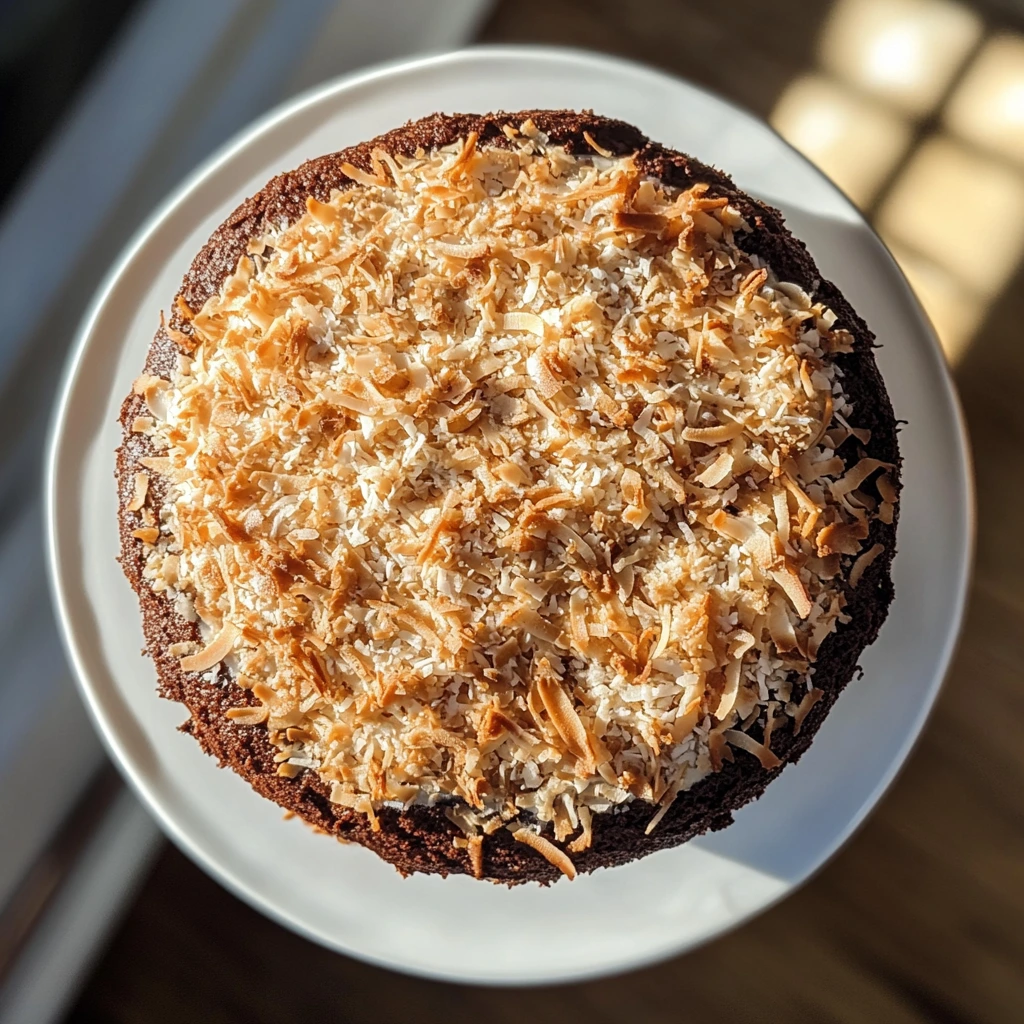
What Makes German Chocolate Cake Unique?
Coconut-Pecan Frosting: The Real Star of the Cake
One of the most unforgettable features of this dessert, and a key part of the German chocolate cake origin, is the frosting. It’s not your typical buttercream or whipped topping. Instead, it’s a thick, rich, caramel-like mixture filled with sweetened shredded coconut and chopped pecans. This frosting is spread between the cake layers, on top, and sometimes even around the sides. Every bite delivers a chewy, nutty contrast that sets this cake apart from every other chocolate dessert.
The frosting is cooked on the stove, not whipped cold, and it requires a bit of patience. You slowly heat evaporated milk, egg yolks, brown sugar, and butter, stirring constantly until it thickens into a golden, glossy texture. Once it’s removed from the heat, vanilla extract, coconut, and pecans are stirred in. The result is nothing short of magical. This frosting is directly tied to the German chocolate cake origin story. When Mrs. Clay submitted her recipe in the 1950s, it was the use of this coconut-pecan topping that made it stand out. Southern bakers, already fond of pecan-based sweets, embraced it wholeheartedly.
The Difference Between German and Classic Chocolate Cake
A lot of folks mistakenly believe German chocolate cake is simply a more decadent take on classic chocolate cake. But a closer look reveals its distinct character. For starters, the chocolate used in the original recipe was German’s Sweet Chocolate, which has a milder flavor than bittersweet or unsweetened varieties. This chocolate produces a gentler, sweeter texture that contrasts beautifully with the bold, nutty richness of the frosting.
Unlike classic chocolate cake, which often uses layers of buttercream or ganache, German chocolate cake embraces a completely different textural experience. The cake is soft and moist, while the frosting adds crunch and chew. It’s a dessert that engages your senses on every level.
Another difference lies in how people interact with it. German chocolate cake isn’t just eaten, it’s celebrated. It’s the kind of cake that gets passed down through generations, often tied to memories of birthdays, holidays, or family reunions. That emotional connection is what continues to support the legacy and conversation around the German chocolate cake origin.
Don’t miss our featured sour cream chocolate cake, which showcases another variation of chocolate indulgence. While different in flavor and texture, it reminds us that there are many delicious ways to explore chocolate cake traditions, both old and new.
Modern Takes on the Classic Recipe
Popular Variations: Cupcakes, Poke Cakes, and More
While the German chocolate cake origin traces back to a traditional layer cake in the 1950s, today’s bakers have taken the classic and spun it into dozens of delicious directions. From cupcakes to poke cakes and even cheesecakes, this iconic flavor combination continues to evolve with time and creativity.
German chocolate cupcakes are a popular party favorite. They feature the familiar airy chocolate foundation, finished with a hearty scoop of the classic coconut-pecan topping. Some bakers even inject the frosting into the center of the cupcake for a surprise bite of sweetness.
Poke cakes have also become a fun twist on the classic. In this variation, a chocolate sheet cake is baked and then punctured throughout using the end of a wooden spoon. Sweetened condensed milk or chocolate ganache is poured into the holes before adding the coconut-pecan topping. The outcome is decadently moist, flavorful, and a hit across social media.
Cheesecakes and trifles are now joining the celebration, too. You’ll find recipes that layer German chocolate cake chunks with whipped cream and frosting in jars or bowls, offering a no-fuss dessert for gatherings and potlucks. These creative versions reflect how beloved the original is and how the German chocolate cake origin continues to inspire new ideas.
Viral Recipe Hacks and Shortcut Tips
Today’s home bakers often look for easier ways to enjoy timeless desserts without losing the charm. That’s where modern recipe hacks come into play. Many shortcut versions of German chocolate cake use a boxed chocolate cake mix paired with homemade coconut-pecan frosting. This hybrid method still honors the flavor of the original while saving time in the kitchen.
Others use microwave mug cake recipes that deliver a single-serving German chocolate cake in just minutes. These quick versions are perfect for solo celebrations or late-night cravings. Even air fryer recipes are gaining traction among food bloggers, showing just how versatile this appliance can be in today’s kitchens.
If you’re feeling adventurous, you might even try baking a gluten-free or vegan variation. Several alternative recipes replace traditional ingredients without sacrificing taste. Whether you go classic or modern, every adaptation still carries the spirit of the German chocolate cake origin, celebrating the combination of chocolate, coconut, and pecan in new and exciting ways. Craving another creative chocolate dessert? Discover great ideas like our 3-ingredient protein chocolate cake for a lighter yet satisfying twist that fits even a busy schedule.
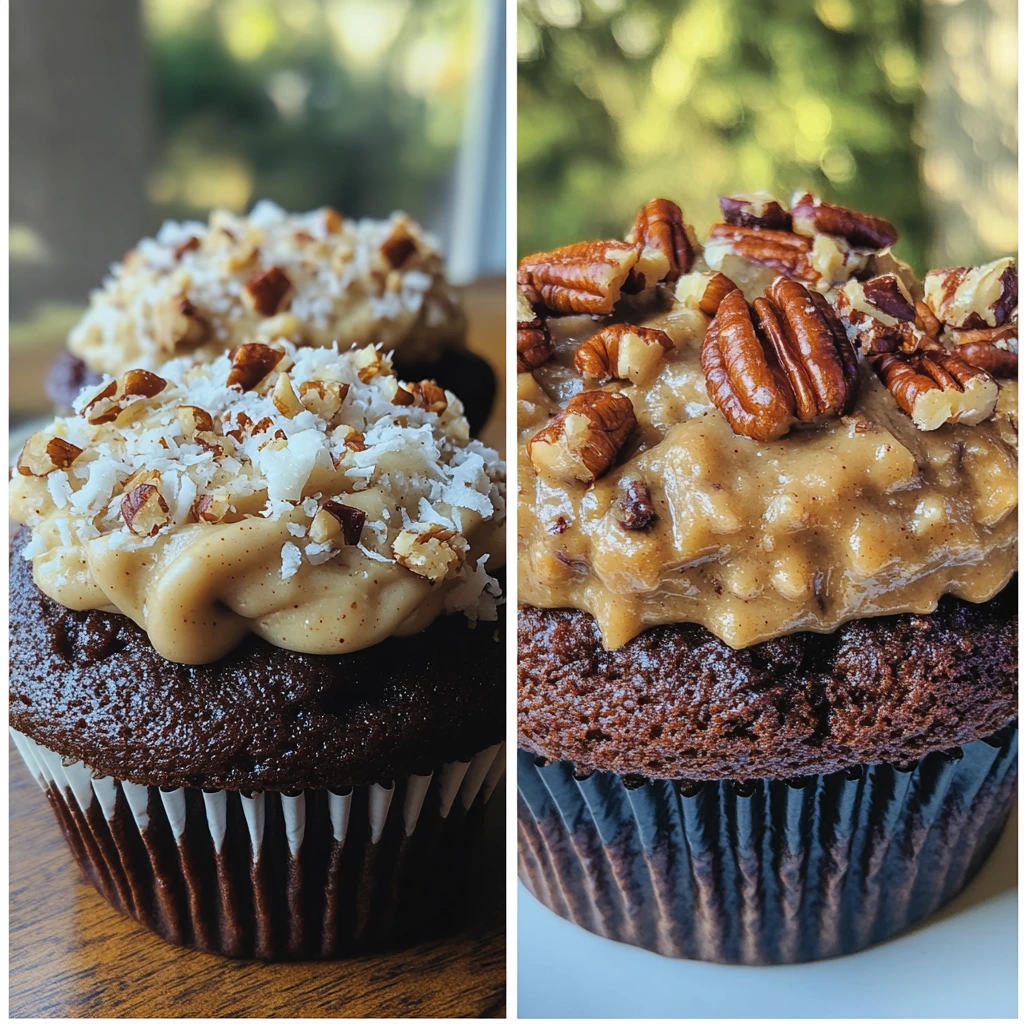
How to Make Authentic German Chocolate Cake at Home
Step-by-Step Guide for Baking the Cake
There’s something magical about recreating a cake with a story as rich as its flavor. When you understand the German chocolate cake origin, baking it becomes more than just following a recipe. It becomes a celebration of tradition, taste, and transformation.
To start, preheat your oven to 350°F and prepare two 9-inch round cake pans. Grease and line the bottoms with parchment paper to help the layers release cleanly after baking.
In one bowl, whisk together your dry ingredients: flour, sugar, cocoa powder, baking powder, baking soda, and salt. In another bowl, beat together eggs, buttermilk, oil, and vanilla extract. Slowly combine the wet ingredients with the dry, then stir in boiling water. The batter will be thin, but that’s exactly what gives this cake its soft, tender texture.
Pour the batter evenly into the pans and bake for 30 to 35 minutes. Once done, allow the cakes to cool completely before frosting. This helps prevent sliding and gives the cake structure.
Understanding the German chocolate cake origin gives meaning to each step. Every ingredient and instruction ties back to a cake that was never meant to become famous, yet now lives on in kitchens everywhere.
Best Frosting Techniques and Pro Tools to Use
The frosting is what sets this cake apart, so it’s worth getting it right. To make it, combine evaporated milk, sugar, egg yolks, and butter in a saucepan. Stir constantly over medium heat until the mixture thickens. Once off the heat, stir in vanilla, shredded coconut, and chopped pecans. Let it cool before spreading.
Start by placing one cooled cake layer on your serving plate. Add a smooth layer of the coconut-pecan frosting, leaving about half an inch around the edges. Add the second layer and frost the top. You can frost the sides with the same mixture or opt for a classic chocolate buttercream for contrast.
When you know the German chocolate cake origin, even the decorating becomes more intentional. This cake was never meant to be overly fancy. It’s about flavor, texture, and a bit of nostalgia.
Using a Wilton 2D or 1M tip with a reusable piping bag can help give your cake a clean, professional look. But honestly, a butter knife and a bit of love do the trick just fine.
If you want to see a variation of chocolate frosting styles in action, don’t miss our chocolate cake with cream cheese frosting. It’s another beautiful example of how simple techniques can create stunning results.

Preservation, Storage, and Make-Ahead Tips
How Long Does German Chocolate Cake Last?
Once you’ve baked your masterpiece, you’ll want to enjoy it at its best. Fortunately, understanding how to store it properly ensures that every slice stays moist, flavorful, and true to its heritage. Knowing the German chocolate cake origin also reminds us that this cake was designed for celebrations, often made ahead for gatherings and events.
If kept in an airtight container at room temperature, the cake will remain fresh for as long as three days. If your kitchen tends to be warm or humid, refrigerating it is a good idea. Make sure to leave it at room temperature for roughly 30 minutes before serving, allowing the frosting to soften and the flavors to come alive.
When placed in the refrigerator, it can stay good for anywhere between five to seven days. The coconut-pecan frosting works to retain moisture, especially when the cake is securely wrapped or stored in a sealed cake container. The texture of the frosting may become firmer in the fridge, but the flavor will remain delicious.Knowing how long the cake stays fresh goes beyond simple practicality. It’s about preserving a dessert that carries the spirit of family history, small-town kitchens, and the surprising German chocolate cake origin that makes it more than just a sweet treat.
Best Practices for Freezing and Reheating
Freezing this cake is surprisingly easy and doesn’t take away from the taste or texture. For best results, wrap each cooled cake layer individually in plastic wrap, then place them in freezer-safe bags. You can freeze the unfrosted layers for up to 3 months. When you’re ready to assemble the cake, remove the layers from the freezer and frost while they are still slightly firm. This prevents crumbs and makes decorating easier.
You can also freeze the fully assembled cake. To do this, refrigerate the cake until the frosting firms up, then wrap it tightly in plastic and foil. You can even slice it first, wrapping each piece individually for easier serving later.
Thaw the cake in the refrigerator overnight, then bring it to room temperature before enjoying. This preserves the rich texture and flavor that define a great German chocolate cake. These tips, while modern, still honor the traditional German chocolate cake origin, helping you enjoy it just as much on day five as you did on day one.
Bakers often worry that freezing will dull the taste, but with this cake, the bold coconut and pecan filling hold up beautifully. Some people believe the flavors deepen after a day or two, making it even more irresistible.
Cultural Legacy and Misconceptions About the Cake
Why the Cake Continues to Be Misunderstood
Even after decades of popularity, the German chocolate cake origin is still widely misunderstood. Many home bakers and even seasoned chefs assume it hails from Germany, imagining it as a traditional European dessert enjoyed during festive occasions. In reality, its story is rooted firmly in the United States.
Much of the confusion stems from the name. The term “German chocolate” leads many to think of the country rather than Samuel German, the man behind the chocolate. When the apostrophe was dropped from “German’s Chocolate,” it only made matters worse. This small change blurred the cake’s true roots and deepened the public’s misconception.
Over time, the dessert gained a reputation as something exotic, even though it originated in a Texas kitchen using familiar American ingredients. Countless cookbooks and blogs have repeated the myth, further distancing the cake from its actual background.
Understanding the German chocolate cake origin isn’t just about setting the record straight. It’s about celebrating the real story, one of American innovation, home baking, and an accidental legacy that turned one recipe into a national favorite.
Its Influence on American Baking Culture
Beyond the flavor, this cake has become a symbol of creativity in the kitchen. It opened the door for other non-traditional frostings, layer combinations, and texture-forward designs. Before it, most chocolate cakes followed a standard formula. But once German chocolate cake entered the scene, home bakers began to experiment.
The frosting, made with cooked egg yolks, evaporated milk, coconut, and pecans, inspired others to try caramel fillings, nut toppings, and non-standard frostings that added depth and contrast to baked goods. The emotional story behind the cake made it even more powerful. It wasn’t just a dessert. It was someone’s family recipe, someone’s birthday memory, someone’s first proud bake.
Even now, food bloggers and recipe developers continue to reinvent the cake while still staying true to the German chocolate cake origin. Whether you’re baking the original or putting your own spin on it, the heart of this dessert remains the same. It is about flavor, family, and food that tells a story.
Conclusion
The German chocolate cake origin is one of those rare stories where a simple mistake in name turned into a national dessert legacy. What began as a recipe submission from a Texas homemaker, using a chocolate created by Samuel German, evolved into one of America’s most iconic cakes. Along the way, myths grew, flavors deepened, and family memories were made, one slice at a time.
This cake’s rich chocolate base and its famous coconut-pecan frosting make it stand apart from any other. But it’s not just the taste that matters. It’s the story behind it. When you bake a German chocolate cake, you’re not just following a recipe. You’re continuing a journey that began over a century ago, with a bar of chocolate and a bit of culinary creativity.
Whether you’re making it from scratch for a birthday, bringing it to a potluck, or freezing slices to enjoy later, this cake delivers more than just flavor. It brings history, culture, and a comforting sense of home to every plate.
So the next time someone asks if German chocolate cake is German, you can smile, serve them a slice, and share the real story. Because now, you know the true German chocolate cake origin.
- Love this recipe? Follow us on Facebook and Pinterest for more delicious bakes, tips, and inspiration!
FAQs
Where does German Chocolate Cake originate?
Despite its name, German chocolate cake is not from Germany. The German chocolate cake origin is American. The cake was first introduced to the public in 1957 when a homemaker from Dallas, Texas, submitted her recipe to the Dallas Morning News. She used a specific type of sweet baking chocolate called German’s Sweet Chocolate, developed by Samuel German for the Baker’s Chocolate Company. The cake’s name honored the chocolate brand, not the country.
What nationality was Samuel German?
Samuel German was not German by nationality. He was an English-American chocolate maker who worked for the Baker’s Chocolate Company in Massachusetts during the 19th century. He invented German’s Sweet Chocolate in 1852, which became the key ingredient in what would later be known as German chocolate cake. The German chocolate cake origin is tied to his invention, not his heritage.
Is German Chocolate Cake a Southern thing?
Yes, many consider German chocolate cake to be a Southern favorite, even though it originated in Texas, which straddles Southern and Southwestern culinary traditions. The cake’s popularity spread quickly throughout the South due to its rich, sweet flavor and unique coconut-pecan frosting, both of which resonated with Southern bakers. The German chocolate cake origin may be national, but its heart belongs to the South.
What is a misconception about German Chocolate Cake?
The most common misconception is that the cake has German origins or is based on a traditional German dessert. In reality, the German chocolate cake origin is purely American. The name comes from Samuel German, not the country. Another common myth is that the frosting is a type of buttercream, but it’s a custard-style cooked mixture that makes the cake stand out from all other chocolate cakes.


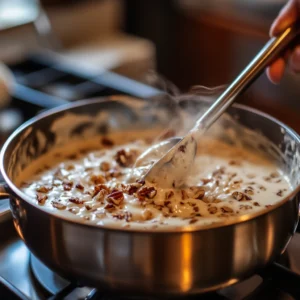
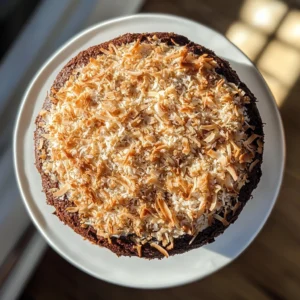
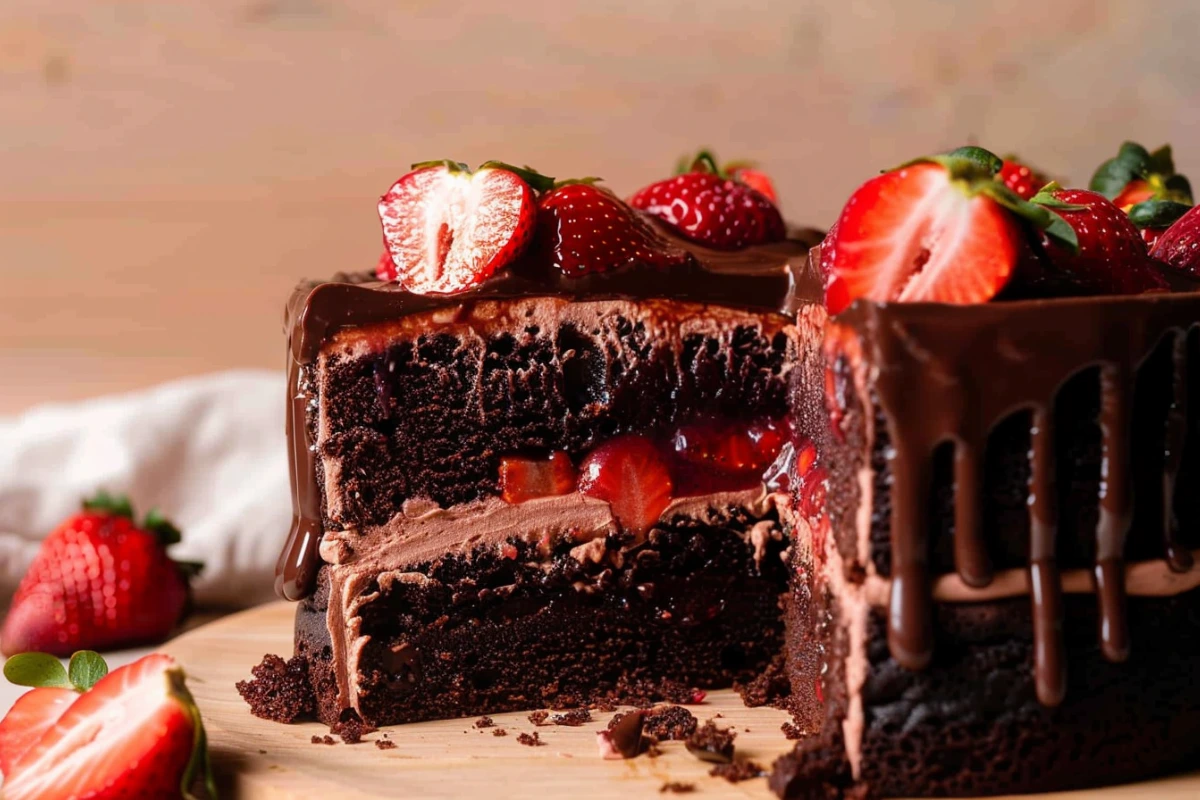
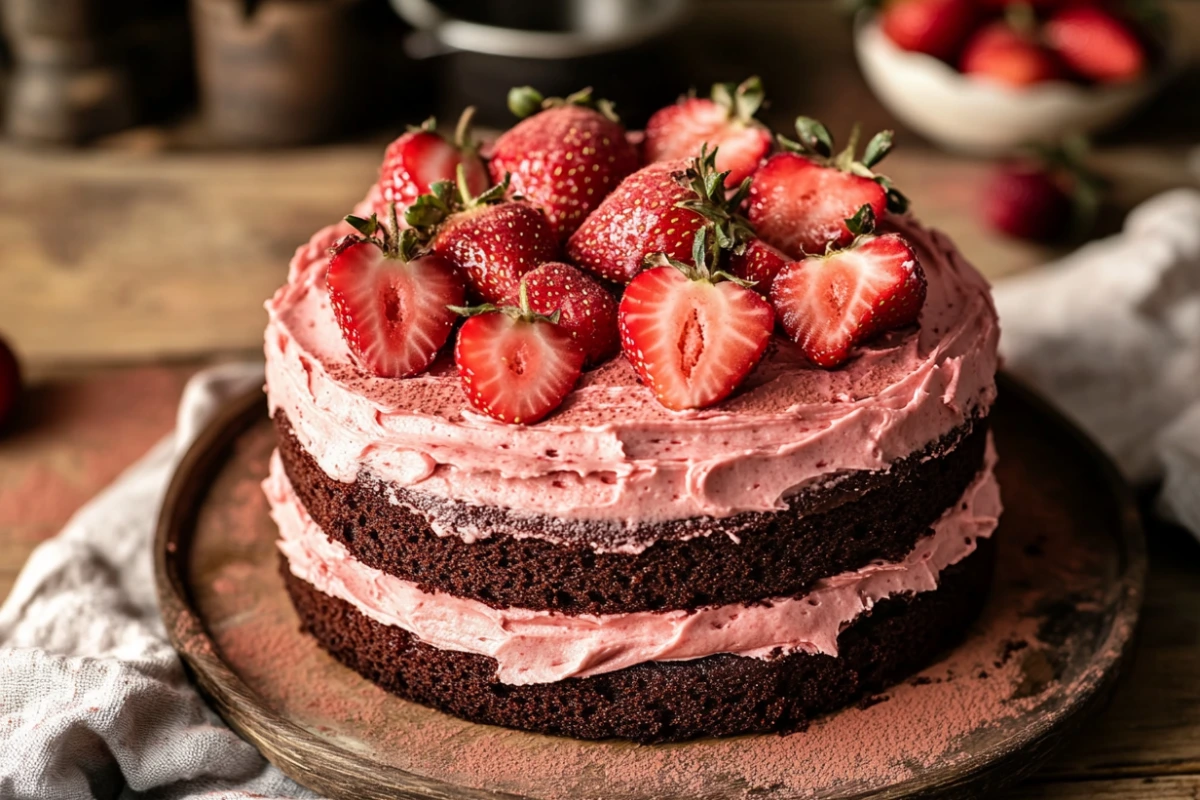

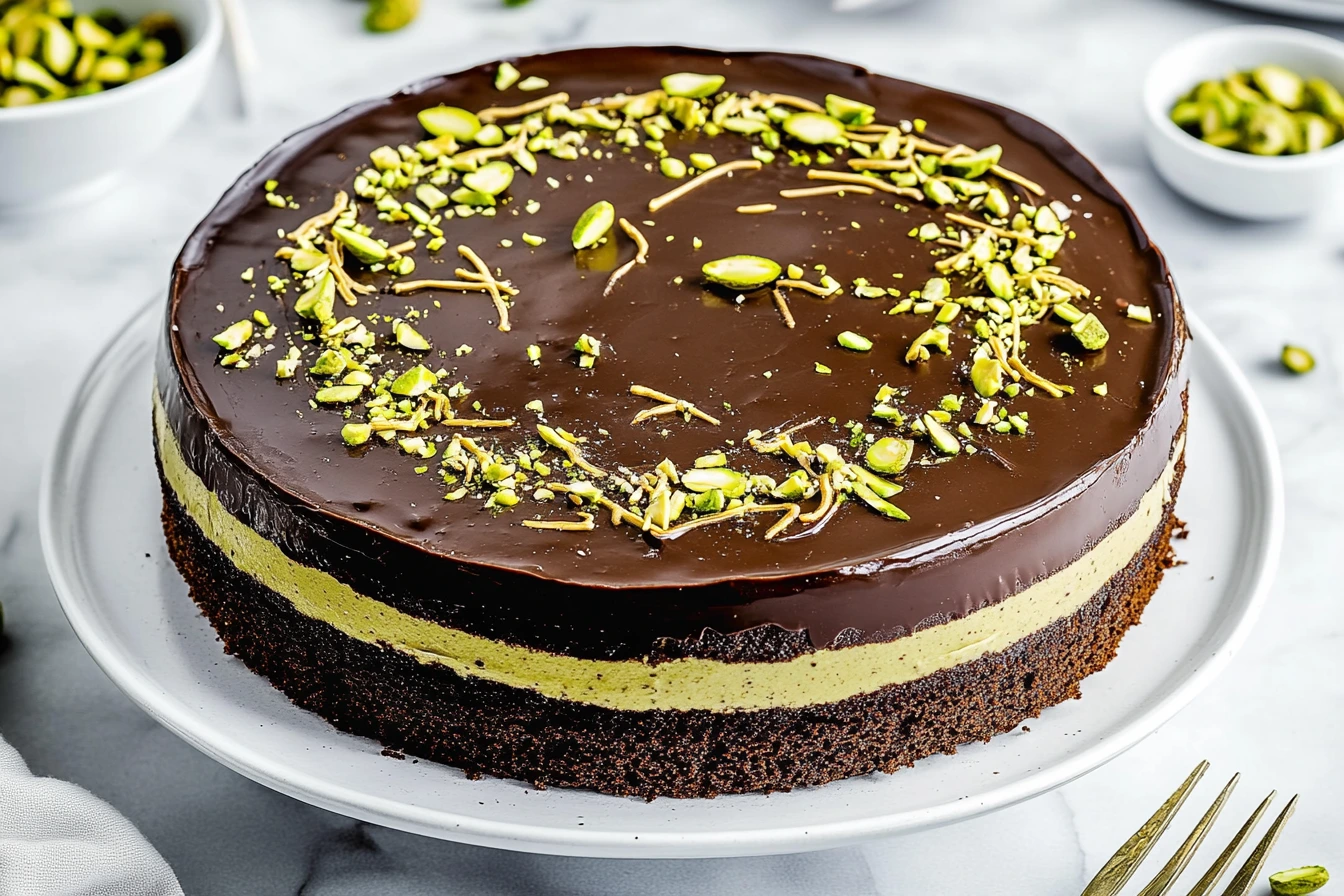
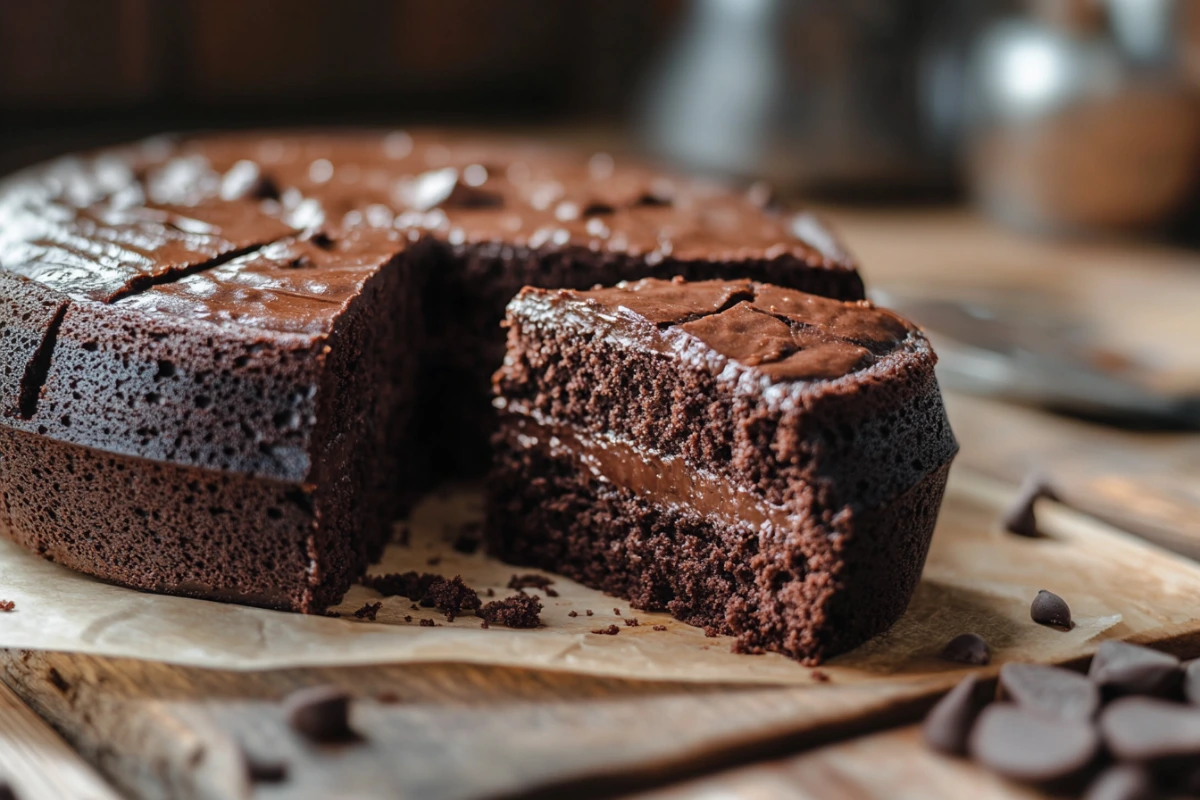
1 thought on “German Chocolate Cake Origin: The Sweet Truth Behind America’s Favorite Dessert”